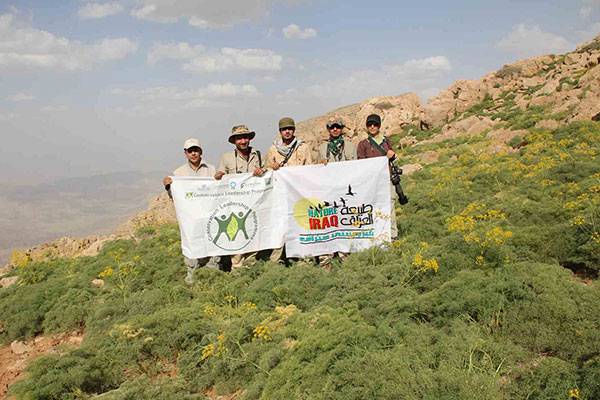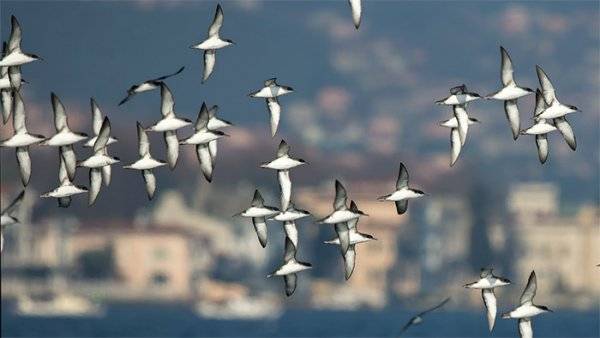A guest blog by Ivan Turkovskii
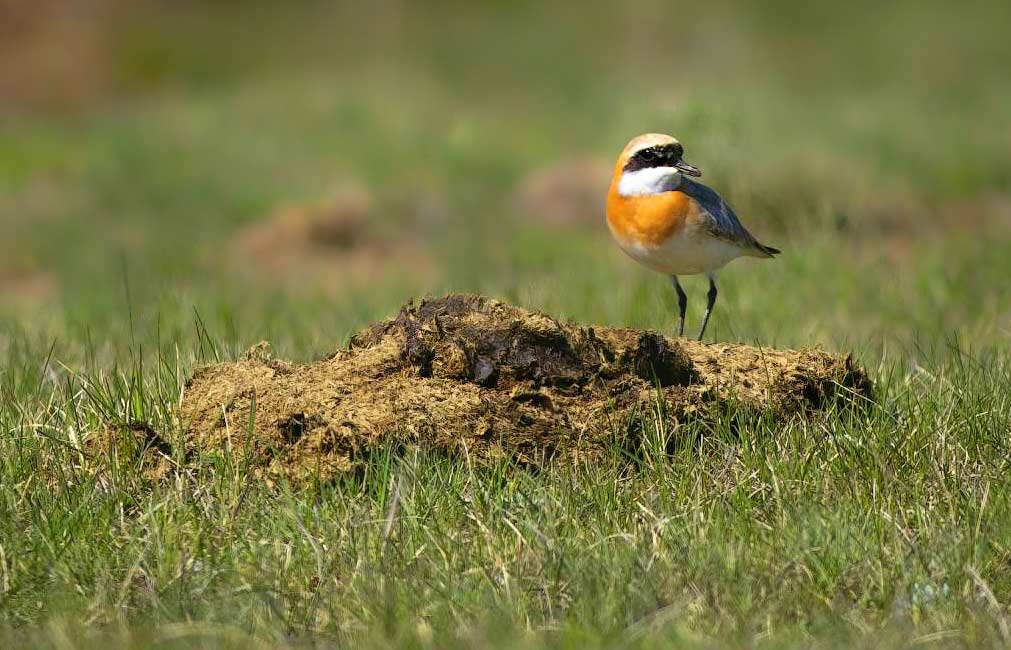
In 2019 I was awarded an OSME grant and want to tell you about the project the aim of which was to survey the breeding birds on Sonkul Lake as well as those using it on passage. We also spent time informing the tourist yurt owners and shepherds about the importance of the vital conservation of the lake as a key place for bird migration and nesting.
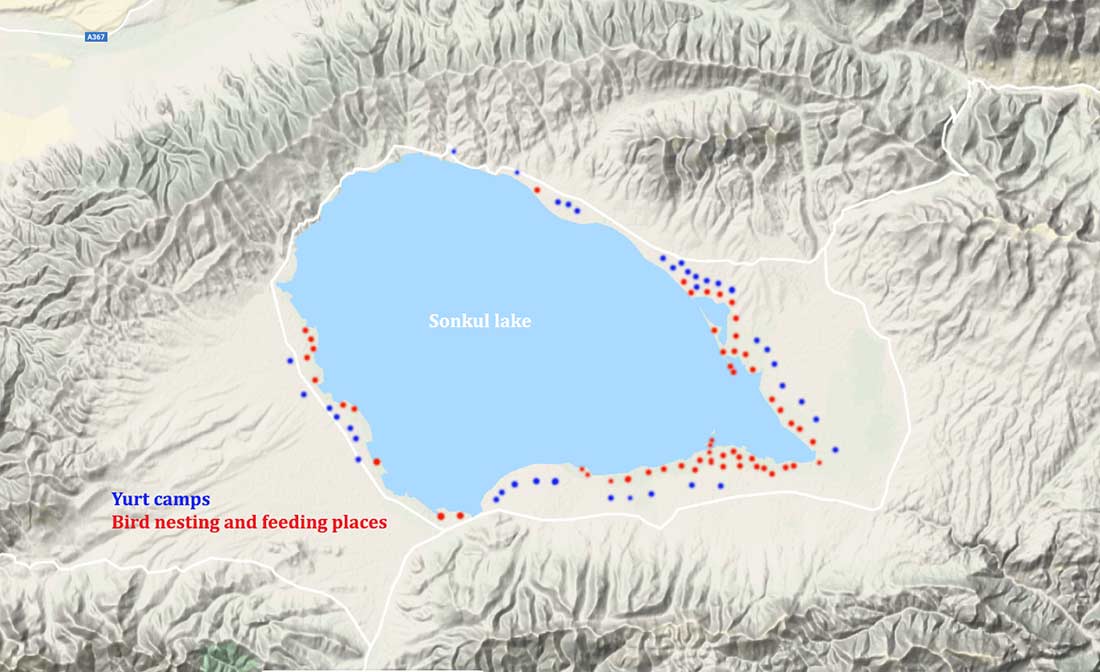
The Sonkul Lake in the Naryn region of Kyrgyzstan is located at an elevation of 3000 m asl. The total area is 278 km², the maximum depth is about 14 m. Freezing occurs from late September to late May. For many decades, Sonkul Lake has been an important site for the migration of waterfowl. About 70 bird species inhabit the lake and adjacent territories, but the project was focused on assessment of the status of waterfowl, notably Demoiselle Crane (Anthropoides virgo), the Great Crested Grebe (Podiceps cristatus), the Ruddy Shelduck (Tadorna ferruginea), the Black Stork (Ciconia nigra), the Lesser Sand Plover (Charadrius mongolus) and the Pallas’s Gull (Larus ichthyaetus), because the adverse factors affect them the most.
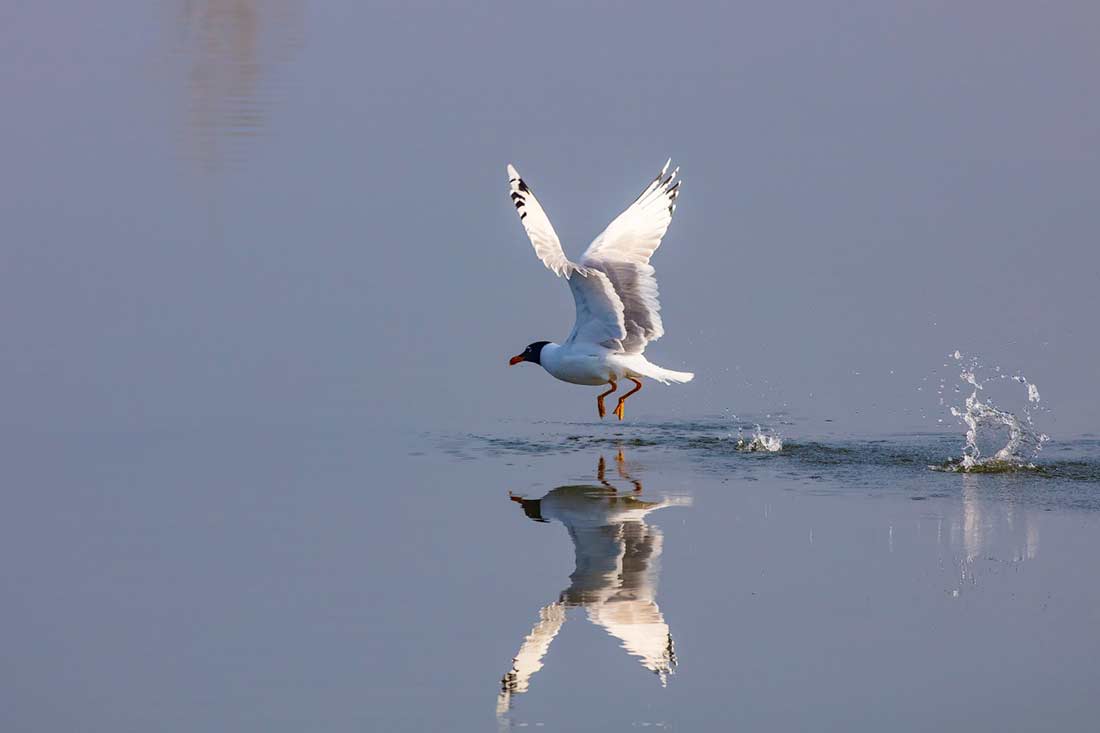
Since ancient times, this region has been used by residents of nearby areas as a place for summer grazing. However, in recent years, the number of livestock has increased significantly. Before laying eggs, birds are adversely affected by livestock and many of them leave this place.
Fishing also has a negative impact on the entire ecosystem of Sonkul, as well as on the deterioration of the living conditions of birds in past years. Mass fishing of fish caused irreparable damage not only to birds during their breeding season, but also to fish stocks themselves.
Over the past 5 years, the volume of fisheries has declined significantly due to the increasing development of tourism in this region. The shores of Sonkul, which have retained the charm of the wild, are very popular among tourists and travelers. In addition to temporary summer dwellings for cattle breeders, yurt camps were organized on the shores of the lake to accommodate and accommodate tourists, stylized as the traditional dwellings of nomads-yurts. In past years, these were single yurts, and then every year their number is growing. This year we recorded 300 yurts on the shores of the lake. It also serves as a disturbing factor for birds nesting on the lake and limits the area on which nests can be built and where migratory birds can be located during spring and autumn migrations.

This year there was also the force majeure factor. In early June, when most of the birds nesting on the lake were on nests or had recently hatched chicks, a sharp cooling took place and heavy snow began to fall. Due to the height and location of the lake, snow is a common occurrence in the summer in this area, but in most cases the weather quickly adjusts and this does not affect birds. However, this year the weather dragged on for several days, a large amount of snow fell. Unfortunately, many of chicks died.
In our opinion, the totality of all these factors has led to the fact that this year the number of nesting birds and the number of young birds decreased compared to last year.
Some species of birds have completely disappeared from the shores of the lake. For example, in recent years, the population of such a bird as Bar-headed Goose (Anser indicus) completely disappeared from the shores of the lake. In 2003, 350 individuals were recorded; in the last three years, not a single individual has been recorded. According to the latest data, these birds have shifted to another lake in the Naryn region, Chatyrkul, which, due to the greater swampiness of the shores, is less accessible for tourists and cattle breeders. The number of birds of the same species as the Demoiselle Crane (Anthropoides virgo) has been significantly reduced; in 2003, 20 pairs were recorded, in recent years a maximum of 2-3 pairs have been met.
Only the southeastern part of the lake is relatively safe for birds. At this point a river flows into the lake, the banks are very boggy, which prevents the placement of yurt camps near the water and significantly limits livestock grazing in this area.
The eastern part of the lake is part of the Karatal-Zhapyryk State Reserve, formed in 1994. The protection status at the lake as a protected area is valid only for 1/3 of the total area. The whole area needs regular environmental monitoring and some measures to reduce fish catches and a significant reduction in disturbances from livestock. With this project, we want to carry out some awareness work for the tourist yurt owners and shepherds about the importance of ecosystem conservation of the lake as a key place for bird migration and nesting.
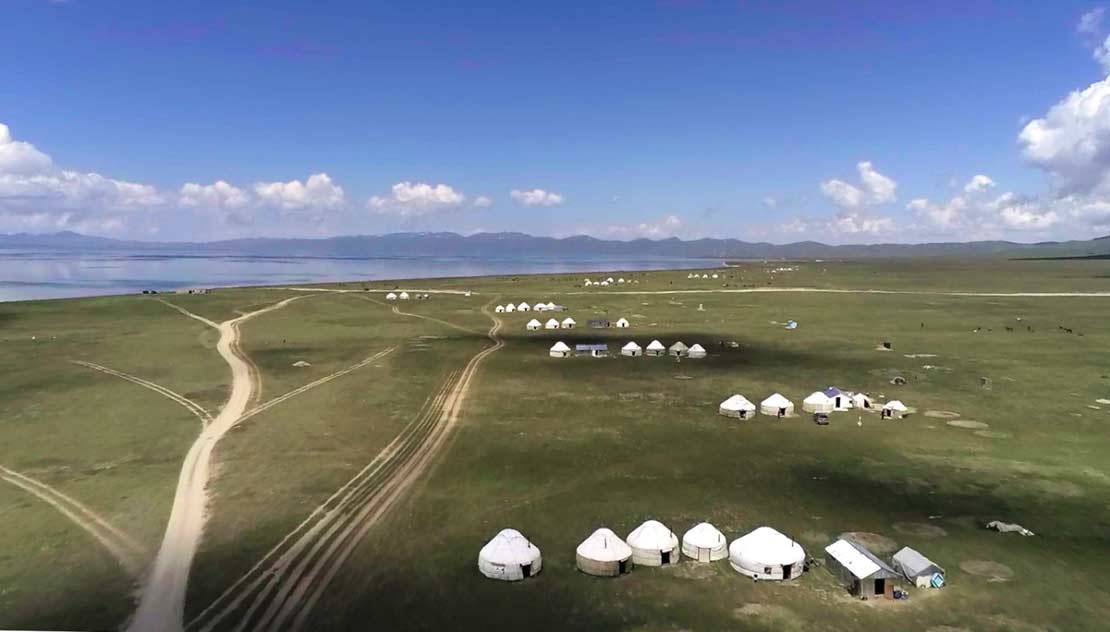
To inform the owners of yurt camps, as well as cattle breeders, we conducted explanatory conversations with them, in which we talked about the importance of conservation of the lake ecosystem, reducing fishing impact, and limiting grazing pressure at rest at nesting and stopover sites for birds, and how to limit places for cattle grazing.
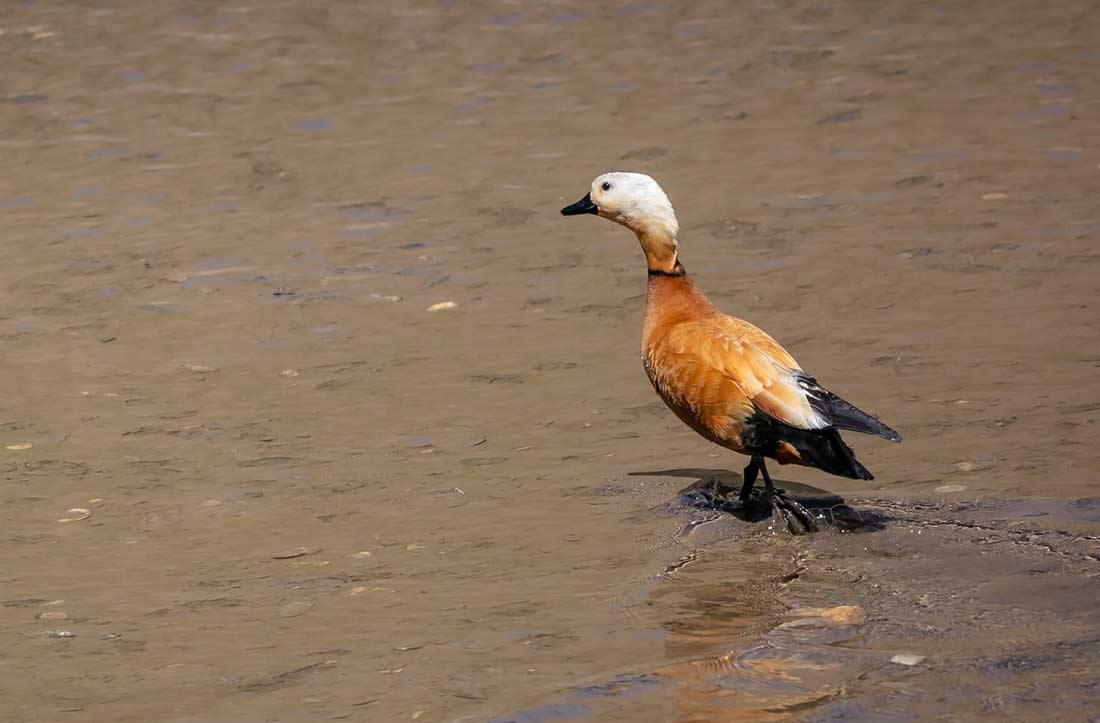
Many of those present at these explanatory lectures did not know that part of the lake is a nature reserve, and they did not previously understand the impact that grazing on its banks and fishing can have on on birds and the lake’s ecosystem.
We also gave several lectures at schools and universities at Bishkek and Naryn about the importance of preserving the ecosystem of the lake and we shared all our results with the Academy of Sciences of the Kyrgyz Republic.
Unfortunately, it is impossible to completely stop cattle grazing on the shores of the lake and many tourists will come to the lake next years. However, people can try to keep cattle out of areas with large concentrations of birds, on islands where they nest or feed.
We hope that understanding what damage they do to the ecosystem and birds, as well as options for partial solutions to this problem, will help livestock owners to adjust grazing areas, and yurt camp owners and tourists to become more careful and cause less disturbance to the important bird populations of this special lake.
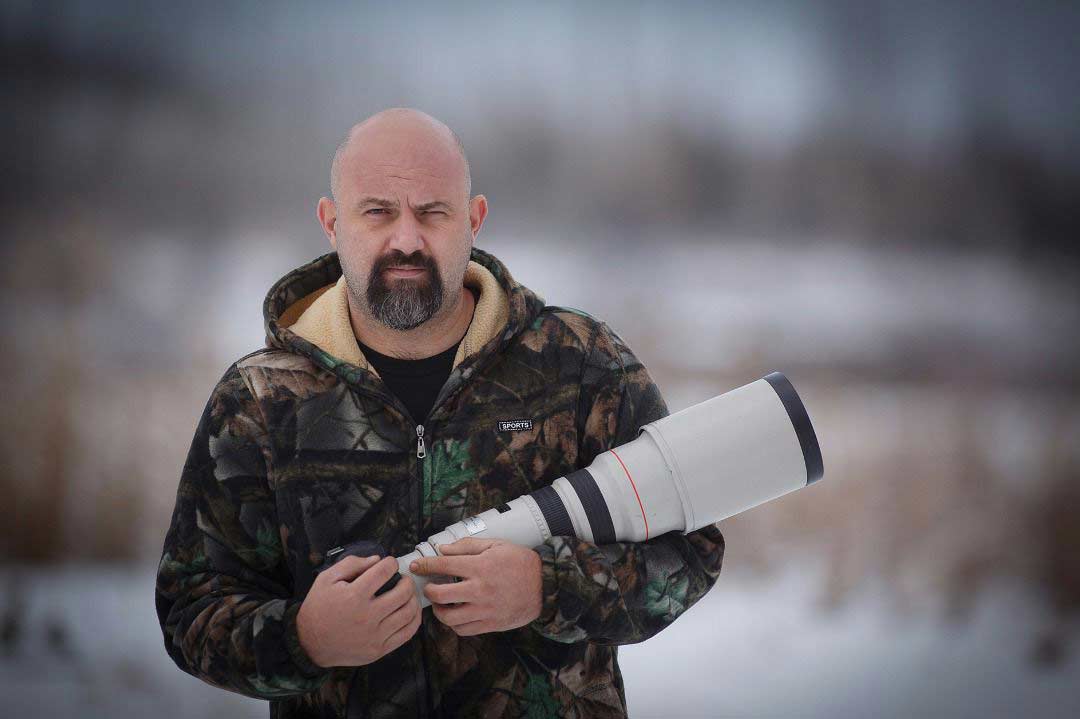
Ivan Turkovskii is a wildlife photographer and researcher from Kyrgyzstan. He a birdwatcher who is engaged in education activities, conducting training and giving lectures on the importance of biodiversity conservation. He also publishes brochures and books on the country’s wildlife and seeks to promote a more careful attitude (especially among children) to nature.

